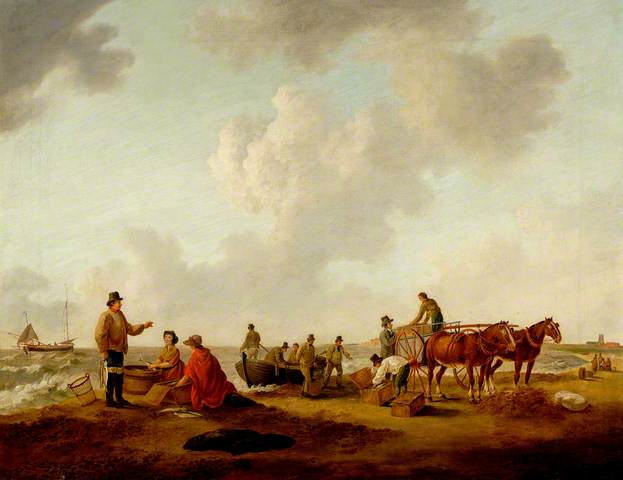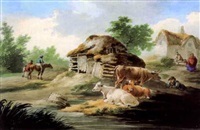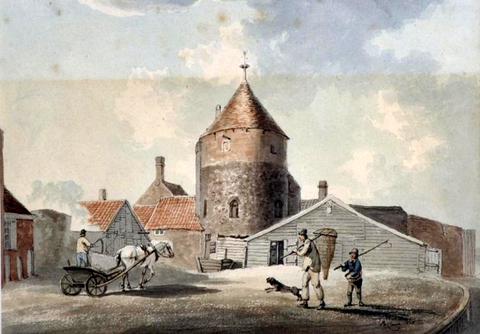LA CAVE, Peter
Petrus La Cave, sometime Le Cave, was baptised at Amsterdam, Netherlands on 24 March 1769, son of Johannes Morellen La Cave and his wife Elisabeth née Schepper. A painter of rustic figures and landscapes, who was probably a member of a family of French artists working in Holland. He was in England from at least 1789 until 1812 and painted many views of Berkshire, Norfolk, Suffolk, Worcestershire, Devonshire, and the area around Leeds. A friend of Julius Ceasar Ibbetson (1759-1817) and an assistant to George Charles Morland (1763-1804). He is recorded as living at 72 Oxford Street, London in 1801, when exhibiting two works at the Royal Academy. His 'Lowestoft Beach', an illustration of fish being unloaded from a small boat, put into baskets, then onto a cart drawn by two horses maybe a scene at Pakefield and is in the collection of Lowestoft Museum at Broad House, Nicholas Everitt Park, Oulton Broad, Suffolk and he also painted a picture of 'Yarmouth Jetty' in the same year. La Cave occasionally painted in oils, but the great bulk of his work were in watercolour or more rarely in pencil, often revealing the influence of Dutch seventeenth century masters. Dawson Turner, banker of Great Yarmouth, had a diverse collection of La Cave's drawings, and at the sale of Turner's library one of the items in the catalogue records 'La Cave. A collection of two hundred and eighty sketches of this artist, consisting of Landscapes, Figures, Animals, etc., in which his touch was particularly flowing, rich, and beautiful. Little is known of this artist, who excelled in depicting the Cow, an animal which in this collection is figured in every viable way.' Cotman borrowed from Dawson Turner and made tracings of several of the drawings of cows, and the Cotman cow, a familiar object in his drawings, was derived from Cotman's study of La Cave. In 1811 La Cave was in extreme poverty and housed in Wilton Gaol in Somerset for a felony, declaring that several of his works were varnished over by Morland, and sold by that artist as his own. It is said that he was found dead in old barn near Swillington, Leeds, where he had taken refuge for the night in 1812, but he also said to have been working in England in 1816.
Royal Academy Exhibits
from 72 Oxford Street, London
1801 592 A Mill near Totness, Devonshire
593 Chudleigh craggs, Devonshire
Works by This Artist

|
Lowestoft Beach, Suffolk, 1803Oil on canvas
|

|
A Rural IdyllWatercolour
|

|
A Farm SceneWatercolour
|